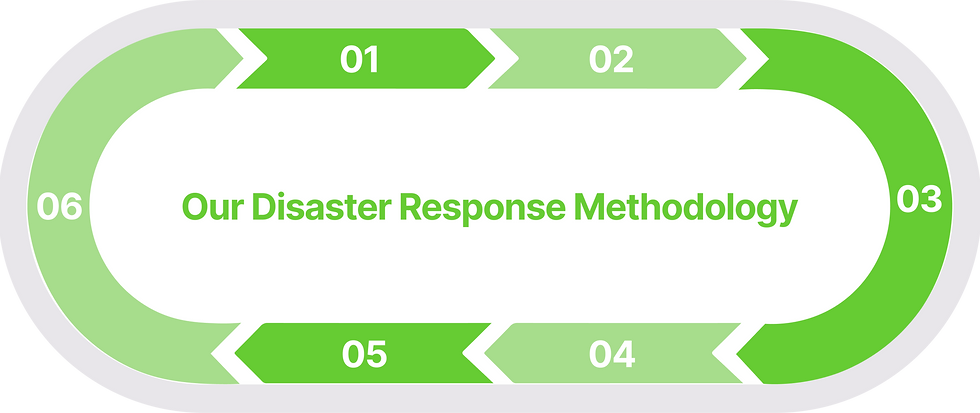
Disaster Response & Green Reconstruction
We bring the circular economy to disaster response, reconstruction, and community regeneration efforts
What We Solve
Natural and civil disasters cause massive physical and emotional damage to communities around the world every year. While disaster management agencies have developed many protocols to respond more quickly and effectively, they can still fall into tunnel vision, focusing only on immediate-term needs. Addressing urgent needs is vital, but we believe more can be done to lower costs, speed up reconstruction, and reduce environmental impact by applying circular economy methods. We also go further by embedding social inclusion into our work—supporting a community’s emotional recovery alongside its physical one.

1
Needs Assessment
2
Program Creation
3
Coalition Building
4
Fundraising
5
Execution
6
Review
Benefits
Massively reduce reconstruction costs
Until now, most disaster rubble has gone to landfills, piling up and polluting the environment. We recycle it for use in local reconstruction, avoiding the CO2 emissions from transporting and producing new construction materials.
Rebuild the local economy
We believe in equipping local communities with tools and support as we all help them rebuild together. Doing so helps generate much-needed jobs while also helping the community to emotionally heal.
Reduce CO2 emissions from reconstruction efforts
Using locally recycled rubble in reconstruction efforts usually leads to massive cost savings. Rather than paying to send it to landfill and also paying to import new construction materials, why not repurpose what's already there?
Forecast the volumes of construction materials you can recover
We've developed a methodology that uses AI and drone and satellite imagery analysis to survey large swathes of land, reaching an accurate estimate of how many buildings have been damaged and how many construction materials we can recover from them.
.png)









